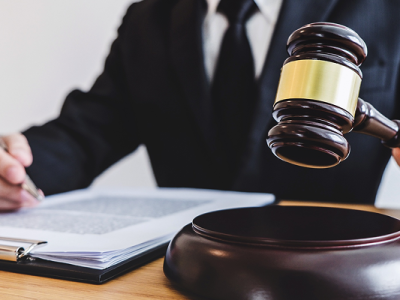
There are 1.7 million rear-end collisions in the U.S. every year. While rear-end accidents are common and may seem straightforward, they can get complex depending on the facts of the case. Numerous contributing factors can make it challenging for you to recover compensation for the damages caused by the accident.
One of the major hurdles is proving fault. Continue reading to learn more about how to prove fault in a rear-end accident.
Causes Of Rear-End Collisions
- Distracted Driving: Driver distraction is one leading cause of rear-end collisions. Motorists engaged in activities like texting, talking, eating, or drinking behind the wheel can be at a higher risk of colliding with the vehicle in front.
- Tailgating: Closely following a vehicle and not maintaining a safe distance. If the vehicle in front brakes, the tailgater might not have enough time to react and stop before hitting the vehicle.
- Road Conditions: Slippery roads due to rain or snow can contribute to rear-end collisions.
- Speeding: Driving at high speed can prevent the driver from slowing down in time to avoid crashing into the vehicle ahead.
Establishing Liability in Rear-End Accidents

In most cases of rear-end collisions, it is the fault of the driver who is in the rear, as it is their responsibility to maintain a safe distance. However, there are some exceptions.
Even if the driver at the front may have acted in a way that led to a rear-end collision, the rear driver can still be held partially or fully liable for the accident. For example, if the driver in front brakes suddenly and causes a collision, the driver at the rear could hold partial liability for not maintaining a safe distance to avoid such a crash.
If you have to deal with the insurance company or attorney of the driver who rear-ended your vehicle, they will try to impose some blame on you to reduce their payout.
Cases Where Driver in the Rear is Not at Fault

Rear-end collisions can occur due to a variety of cases, and while the common assumption is the driver at the back is at fault, there can be some cases where the lead driver is responsible for causing the accident, such as:
- When they suddenly apply the brakes
- They reverse into the vehicle behind them
- They pull out ahead of another vehicle without having adequate space to do so.
- Road rage
- Driving while under the influence of drugs or alcohol
- Driving with a broken taillight
- Driving with a flat tire
A lead driver can be responsible for paying the damages when they acted negligently and caused a rear-end collision. For example, they had a flat tire and failed to warn other drivers by using hazard lights.
The driver in the rear can avoid liability if they prove that they could keep a safe distance between their vehicle and the vehicle ahead and had complete control of the vehicle at the time of the accident. In some cases, a rear-end collision could be the fault of the vehicle manufacturer or the local authorities responsible for road maintenance.
Comparative Negligence in Rear-End Collisions

Sometimes both the driver at the rear share fault in an accident. Those accidents are considered under the comparative fault rule. According to this rule, each party is responsible for the damages they caused, and the party who filed the claim can have their compensation reduced based on their percentage of fault in the case.
For example, if you were tailgating a vehicle and the driver of that vehicle suddenly applied the brakes without warning, you both can share the fault of the accident. The comparative negligence rule is most commonly used in cases where a pileup of vehicles causes multiple rear-end collisions.
How To Prove Fault?

Liability in a rear-end collision can be proven through evidence such as medical records, photos of the damage to the vehicles, surveillance footage, and more. For example, you can submit medical records verifying the extent of the injuries you sustained as a direct cause of the rear-end collision and a police report that includes witness statements on the crash.
According to 1800 Injured lawyers in West Palm Beach, collecting as much evidence as possible will increase your chances of getting maximum compensation. 1-800-Injured is an attorney and medical referral service.
Allow a Car Accident Attorney To Help
Proving fault in a rear-end collision can be challenging. However, getting expert legal guidance from an experienced attorney can help strengthen your case. They can also help negotiate with the insurance provider to get a fair settlement, or if that is not successful, the attorney can take your case to court.
Additional:


